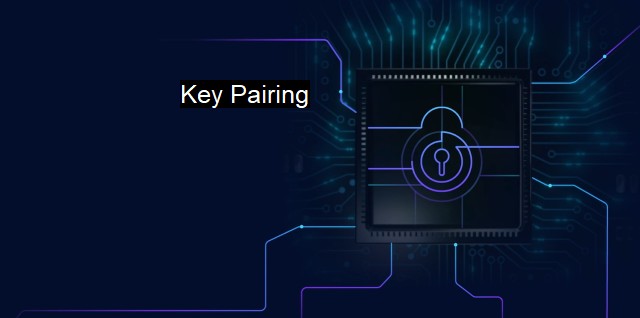What is Key Pairing?
Exploring the Importance of Key Pairing for Secure Cybersecurity and Effective Antivirus Protection: An In-depth Analysis
Key pairing in cybersecurity represents a critical technique for verification, transmission and encryption or decryption of sensitive information. It plays a fundamental interest in antivirus measures and significantly contributes to persistent cybersecurity environment. Its contextual role is expansive; viewership rights, controlling privileges, establishing confidentiality and ensuring data integrity are just to name a few.Key pairing refers to the use of a pair of keys - a public key and a private key - created using complex mathematical algorithms. The unique pair of keys together is called a keypair. This combination is used for encrypting and decrypting information in various digital formats. It is a significant technology in cryptography and encompasses a broad range of cyber activities.
Public key is available to everyone on a network while private key is confidential and kept secure by the entity that generates the key pair. This practice facilitates a secure transfer of data over the internet. When any user sends data encrypted with a public key, only the indented recipient who possesses the corresponding private key can decipher it.
Key pair's potential in antivirus mechanisms is evident with the use of digital signatures. Antivirus software identifies threats by evaluating files against an extensive database of virus definitions. Viruses often try to bypass this detection by mutating or encoding themselves. Antivirus firms use digital signatures, based on public key infrastructure (PKI), to confirm virus definitions' authenticity they send to consumers.
The procedure involves the antivirus firm organically creating a key pair, keeping the private key secure. As they find a new virus, they prepare a definition or signature and encrypt it with their private key before disseminating to antivirus software worldwide. Software using the firm's public key can then decrypt and verify the definition's authenticity.
Key pairing is vital in asserting rights and ordering privileges in a network. admins have special keys granting more privileges compared to regular users. This forms hierarchical structures within cyber environments and ensures tasks are executed by authorized personnel, reducing instances of internal breaches.
When it comes to guaranteeing confidentiality and data integrity, key pairs showcase their worth. The process starts with hashing the data. The sender's private key will then encrypt this hash, forming a digital signature. The digital signature and original data combined, now referred to as a message, is sent to a recipient. The recipient decrypts the digital signature into a hash using the sender's public key. If the computed hash from the received message matches the decrypted hash, data integrity is authenticated - the content received is identical to what the sender sent.
Let us delve into its role in SSL and TLS protocols that websites frequently use to secure communications. When initiating the communication, the server shows its public key. The client creates a symmetric key, encrypts it by public key, and forwards it back to the server. Only the server's private key could decrypt and gather the symmetric key. Consequently, they have established a secure line of communication with this key for further interaction, preventing the risk of data interception by unwanted entities and safeguarding overall security.
In antivirus and cybersecurity practices, the use of key pairings is an essential building block. It ensures data confidentiality, ensures secure communication over public networks and authenticates data integrity, continuing to be at the core of secure digital environment. Its employment spans much further than traditional encryption and decryption; privileged user roles, viewer rights, firmware signing, and secure DNS updates are established cyber routines built on the foundation of key pairs. Incorporating robust key pair methodologies enhances the effectiveness of antivirus measures and thwarts a broader range of cyber threats, asserting an optimistic vision for cybersecurity protocols.

Key Pairing FAQs
What is key pairing?
Key pairing is a process of linking two encryption keys, a public key and a private key, that are used to establish secure communication between two parties.How does key pairing enhance cybersecurity?
Key pairing enhances cybersecurity by providing a strong layer of encryption that prevents unauthorized access to sensitive information. It ensures that only the intended recipient has access to the data, thus making it secure from cyber threats.Can antivirus programs use key pairing?
Yes, antivirus programs can use key pairing to encrypt and decrypt sensitive data. This ensures that the data is only accessible to authorized users and provides an added layer of security against cyber threats.Is key pairing essential for secure communication?
Yes, key pairing is essential for secure communication as it ensures that the data remains private and cannot be intercepted by unauthorized parties. It is widely used in various industries, including banking, healthcare, and government, to maintain data privacy and prevent cyber attacks.| | A | | | B | | | C | | | D | | | E | | | F | | | G | | | H | | | I | | | J | | | K | | | L | | | M | |
| | N | | | O | | | P | | | Q | | | R | | | S | | | T | | | U | | | V | | | W | | | X | | | Y | | | Z | |
| | 1 | | | 2 | | | 3 | | | 4 | | | 7 | | | 8 | | |||||||